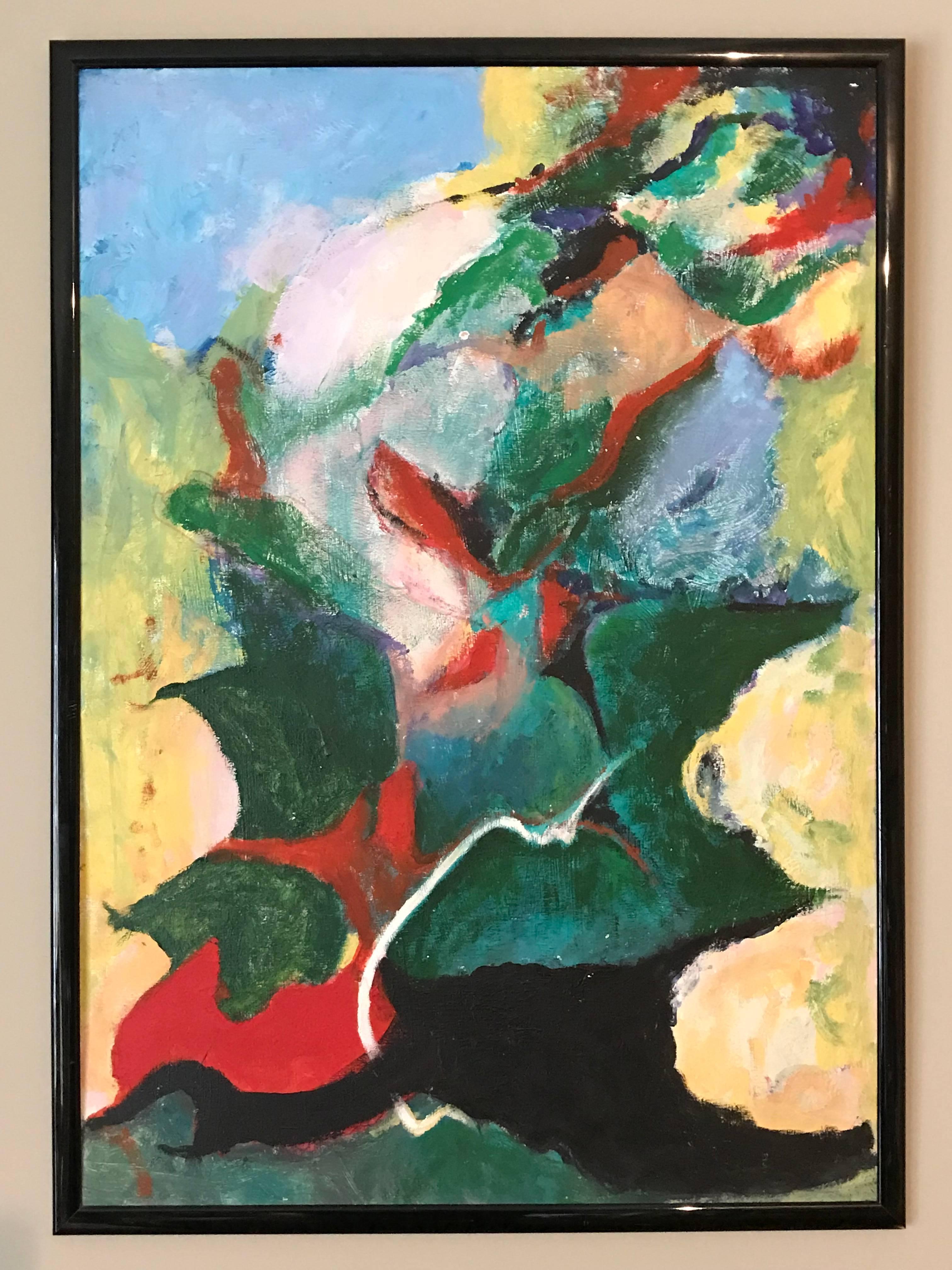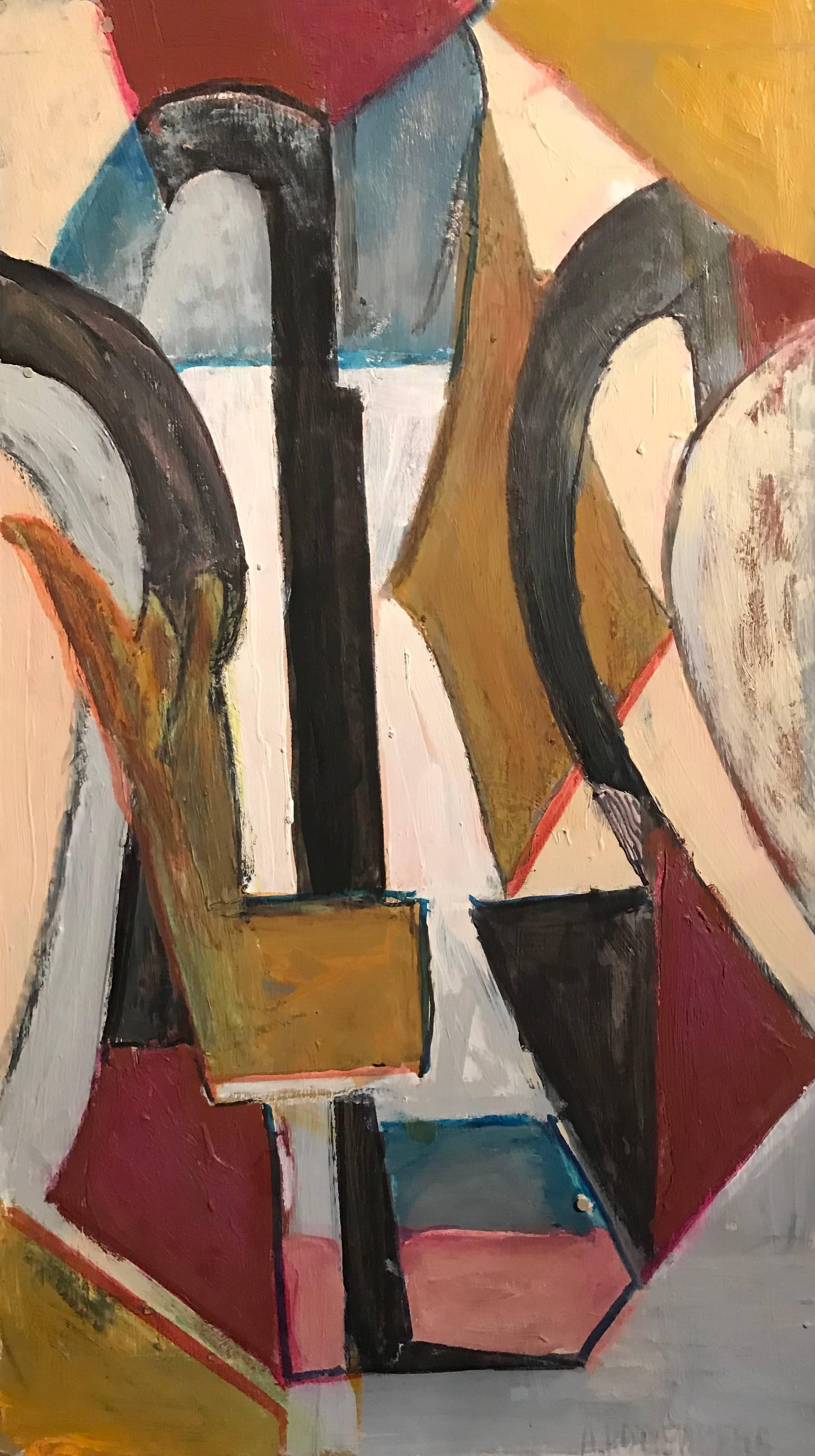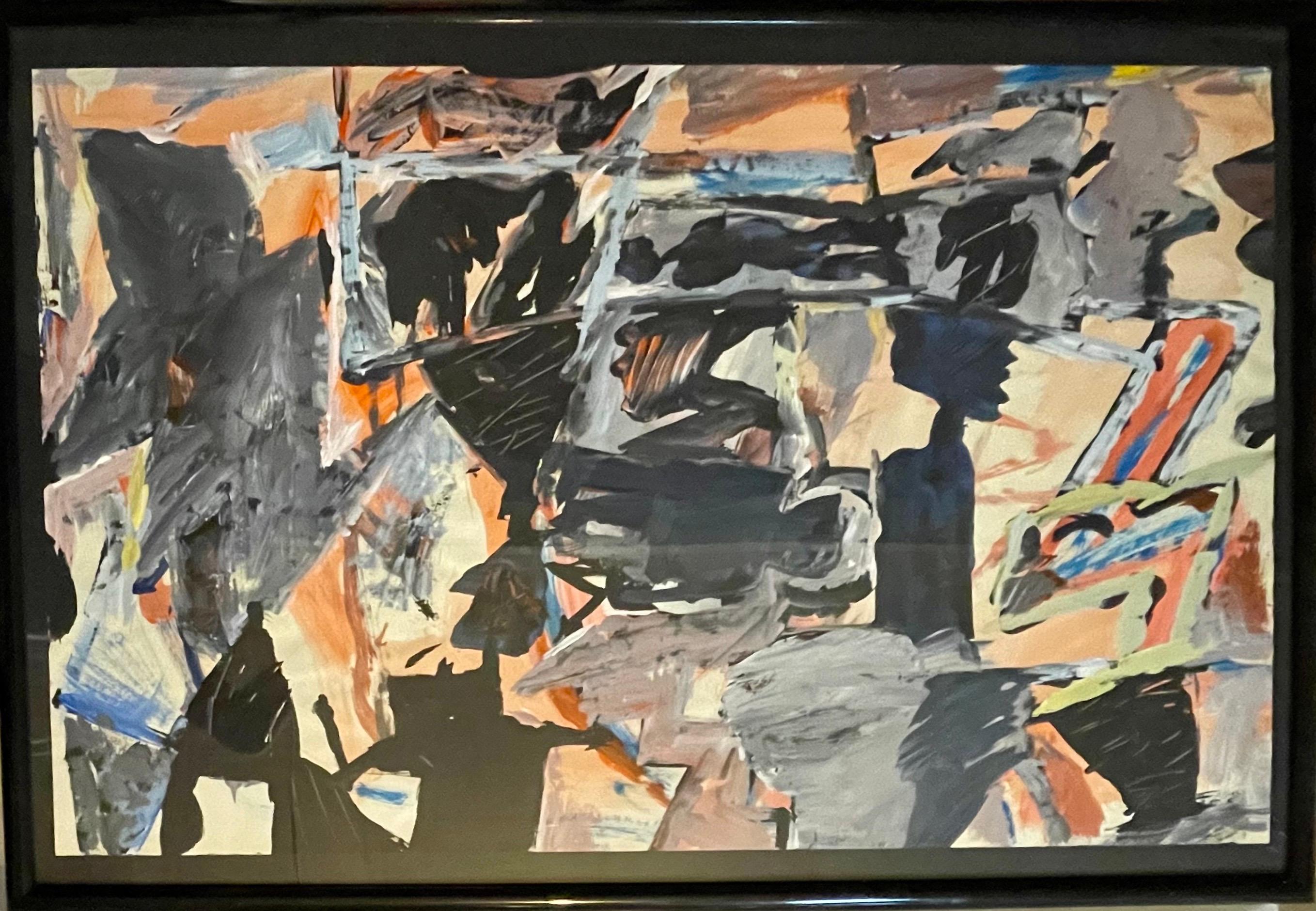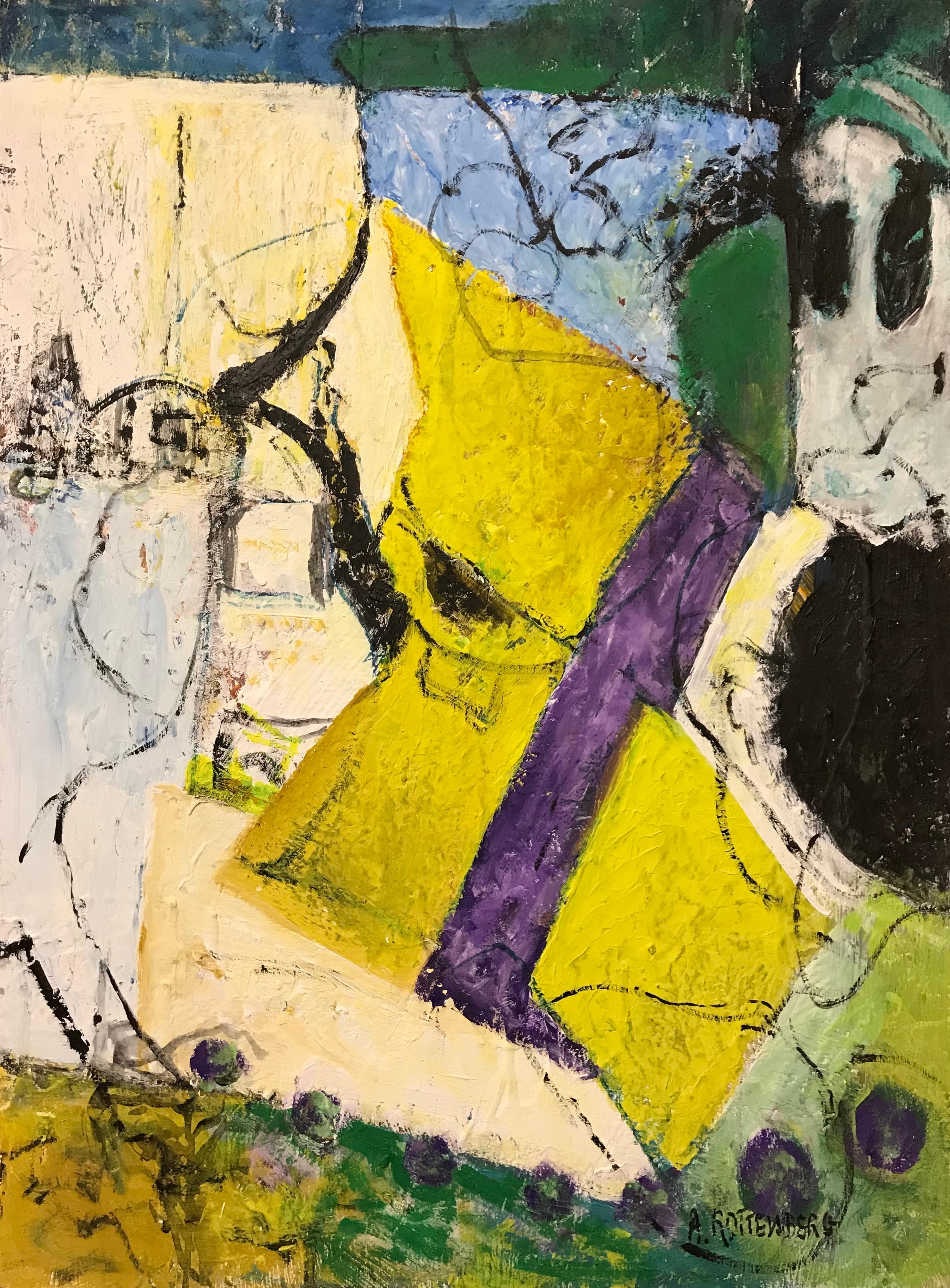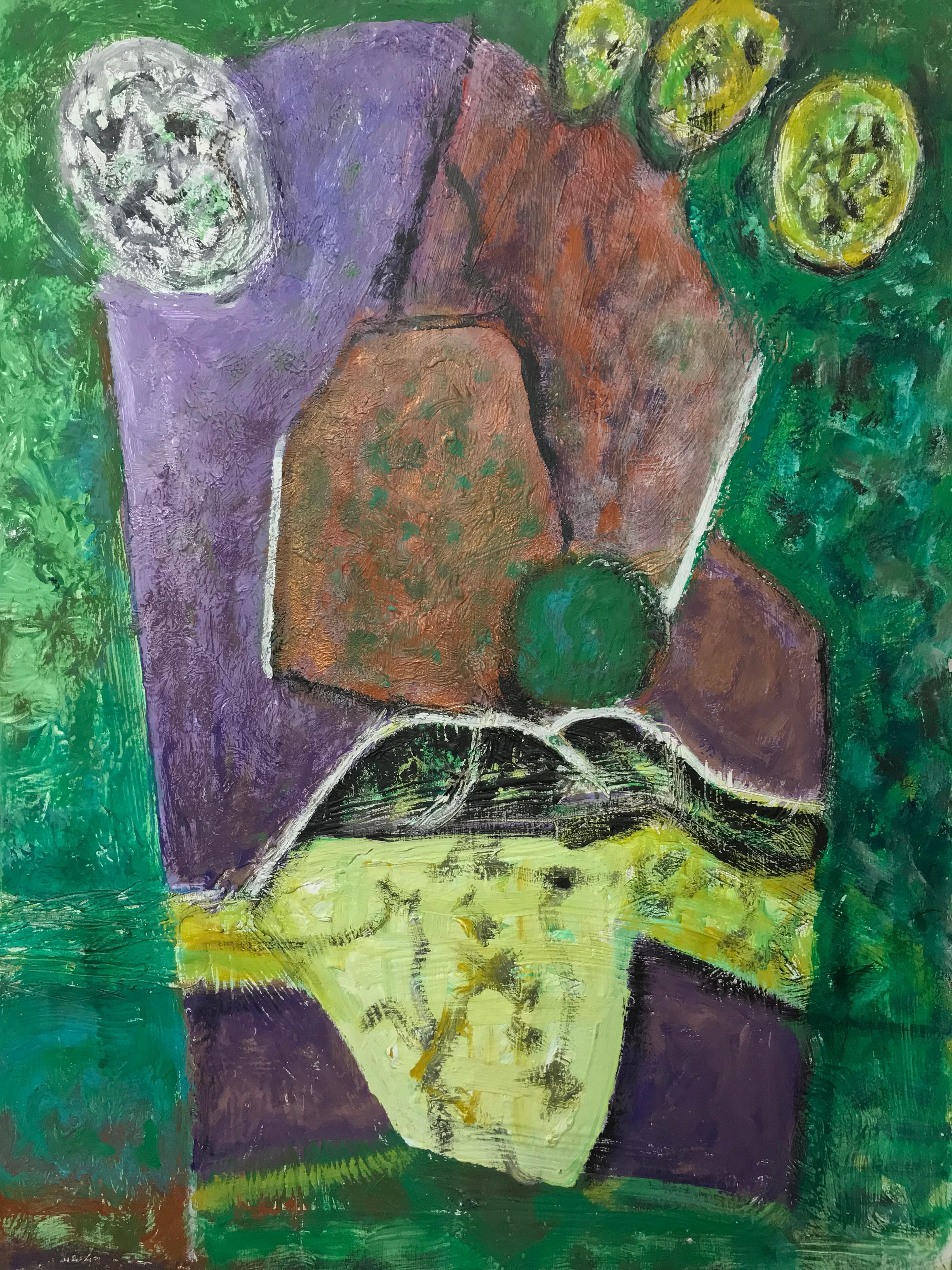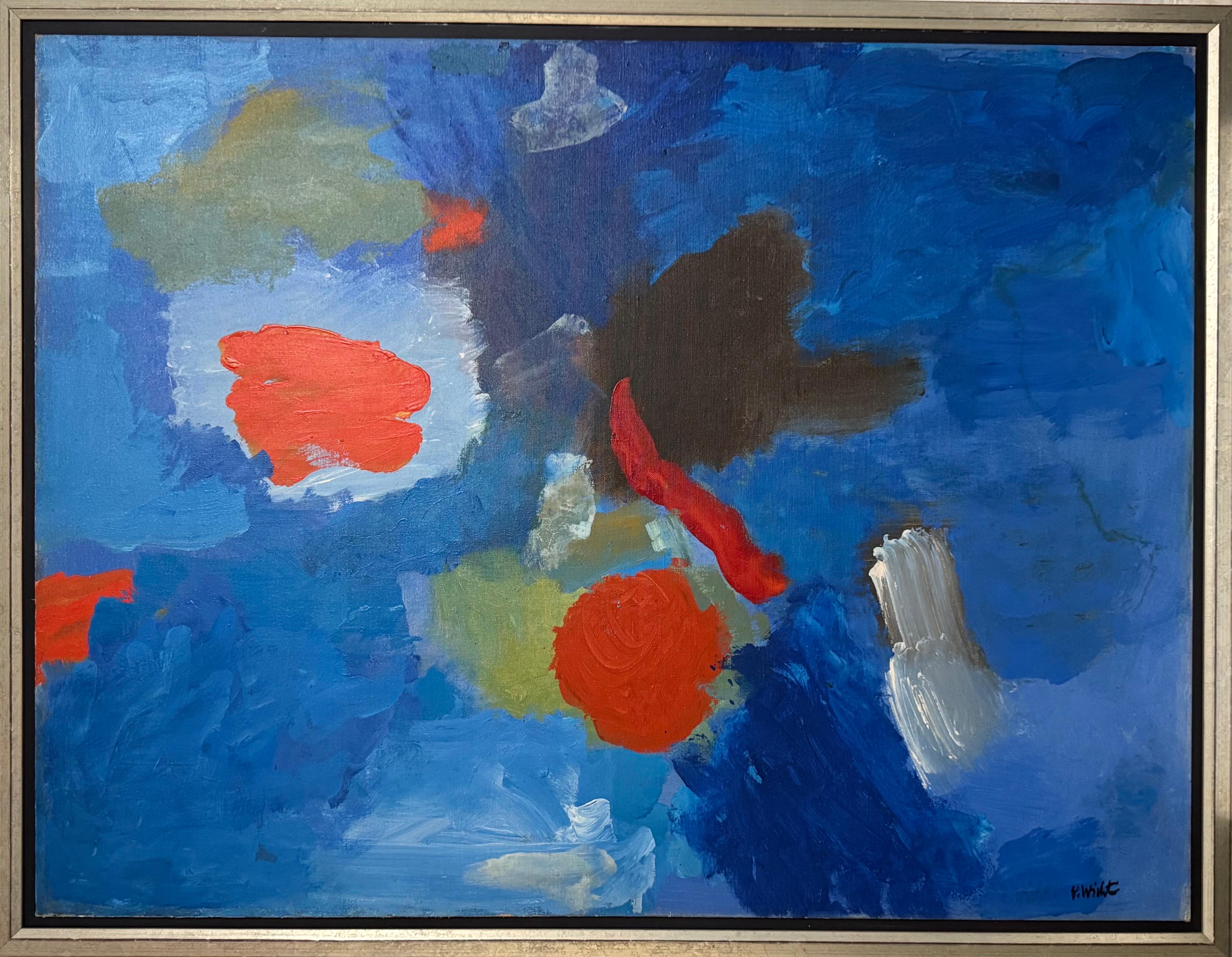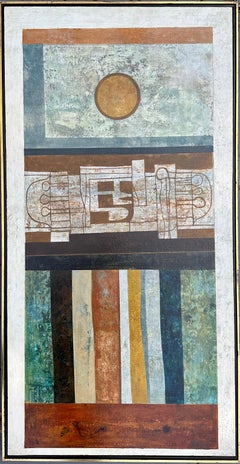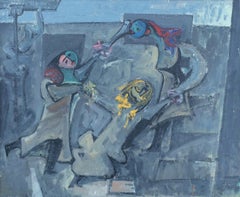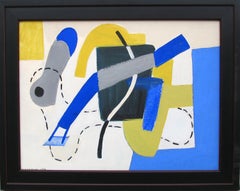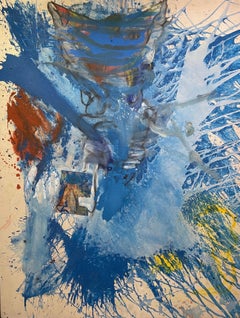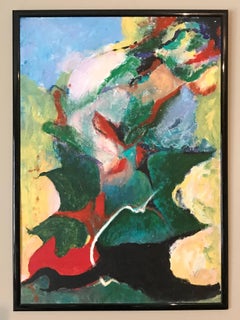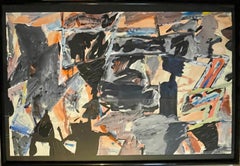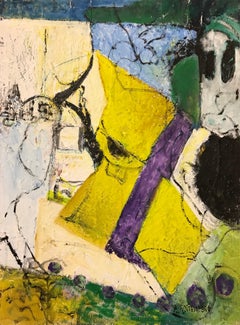Items Similar to 4-35 abstract oil painting by Charles Biederman
Want more images or videos?
Request additional images or videos from the seller
1 of 8
Charles Biederman4-35 abstract oil painting by Charles Biederman1935
1935
$31,750
£24,164.29
€27,674.76
CA$45,159.26
A$49,488.10
CHF 25,843.72
MX$594,711.66
NOK 323,091.38
SEK 304,726.66
DKK 206,561.25
About the Item
Signed and dated "Biederman 4-35" lower right.
About this artist: Charles Joseph Biederman was a twentieth century abstract American artist best known for his constructivist, cubist-inspired reliefs. Biederman is often regarded as an American original, the self-proclaimed “best-known unknown artist in America.” Influenced by the aesthetic of Russian Constructivism and De Stijl, he dubbed his vivid geometric three-dimensional reliefs “New Art,” disregarding traditional mediums such as painting, drawing, or collage. Instead, he favored synthetic materials such as plastic and aluminum, most often coated with bright oil-based paint.
Regardless of his use of similar materials and aesthetic, Biederman’s work departs from the interests of De Stijl, Constructivism and Neo plasticism in his desire to depict the natural world, stripped to its most simplified and beautiful elements. Biederman’s work emphasizes line, transparency, light and shadow in his use of basic geometric shapes and symmetrical compositions. Initially inspired by the cubism of Braque and Picasso, his signature reliefs are regarded by scholars as a three-dimensional continuation of the cubists’ original interests[1]. While Picasso created the illusion of light and shadow through wielding a paintbrush, Biederman employed three-dimensional geometric shapes that create real shadows on the surface of the canvas. Biederman’s reliefs are not static, but constantly vulnerable to changes depending on the lighting conditions in which a relief is displayed, as well as the viewer’s relationship to and movement around the work. The temporal strategies of Biederman’s reliefs were also highly innovative—the artist made a conscious effort to bring a consideration of time into his work by forcing viewers to literally move their bodies and alter their point of views in order to experience the piece fully. An element of time and process is seen in Biederman’s unique system of labeling his work. Most of his reliefs are untitled, marked instead by two dates and the name of a city. The dates signify the time in which the preliminary drawing was executed and the second marks the date in which the work was fully realized. In his search for a New Art, Biederman became preoccupied with innovation. He was an artist concerned not with what was considered good or bad, but one who aimed to produce something that was truly unique and revolutionary.
Born in Cleveland, Ohio, Biederman grew fond of the visual arts at a young age. As a teenager, he enrolled in figure drawing and watercolor courses at the Cleveland Art Institute, and apprenticed at a local advertising agency, where he learned layout design. Despite failing to obtain a high school diploma, he later attended he Art Institute of Chicago from 1926 to 1929. While at school, Biederman began to explore various artistic influences and was immediately drawn to the early twentieth century European modernists, such as Picasso, Van Gogh, Seurat, and particularly Cézanne. Cézanne heavily informed Biederman’s early style, and his fascination with the artist is evidenced in both the visual and written work that he produced throughout his lifetime. Though professors celebrated his technical ability, Biederman failed to attend basic courses at the Art Institute. With no desire to complete his formal education, Biederman eventually left the school in 1929.
Biederman continued to paint throughout the Depression, experimenting with several styles reminiscent of the cubists and biomorphic surrealists. He often painted using discarded canvases and old flour sacks. Subsiding on little, he spent much of this time boarding with friends or sleeping on park benches, refusing to compromise his artistic talents for commercial work. During this time, he became acquainted with a brother of a classmate, John Anderson, who immediately took an interest in his art. Anderson soon became a close friend and patron. In 1934, Biederman left the Midwest for New York, to become established in the modern art scene of the city. During this period Biederman was featured in the show “Five American Constructionists” at Paul Reinhardt Galleries and had his first major solo exhibition at the Pierre Matisse Gallery in 1936.
In 1936, Biederman traveled to Paris where he met several European modernists including Joan Miró, Wassily Kandinsky, Piet Mondrian, Constantin Brancusi, Pablo Picasso, Georges Vantongerloo, and Jean Arp. His disillusionment with the artists’ personas and his growing discontentment with the medium of painting led him to return to New York where he kept to himself and continued to perfect his personal style of geometric reliefs[2]. By the late 1930s, Biederman had retired from the traditional medium of painting, and was working exclusively in structural reliefs composed of synthetic materials. Soon after, he began studying semantics with Alfred Korzybski in 1938, and was inspired to begin writing what evolved into his own interpretation of the history of Western art entitled, Art as the Evolution of Visual Knowledge, to be published a decade later in 1948. Unsatisfied with urban life and eager for an artistic reconnection to nature, Biederman soon returned to the rural Midwest. In 1941, Biederman moved to Chicago, where he reunited with and married Mary Katherine Moore, the sister of John Anderson’s wife. The two married in December of 1941 and started a home in rural Red Wing, Minnesota where Biederman could find inspiration in nature. Mary became essential to Biederman’s work as an artist and theorist; she provided the family’s primary source of income and assisted his written work through editing, translating, and conducting research.
The Walker Art Center in Minneapolis hosted the artist’s breakthrough show in 1965, and the Minneapolis Institute of Art showcased a Charles Biederman retrospective in 1976. Both shows helped to popularize his work throughout the United States, and solidify Biederman’s role in the development of American abstraction in the twentieth century. Unfortunately, Biederman’s wife passed away shortly before the Minneapolis Institute of Art show’s opening in 1975. Her death led to the artist’s reclusive lifestyle, and an unwillingness to cooperate with art dealers and patrons of the Northeast—which historians and scholars speculate cost Biederman his chance at art world fame and widespread recognition in the United States.
Throughout the 1980s and 1990s, Biederman’s work continued to show across the United States and abroad in Europe. In 1991, Biederman arranged to give the University of Minnesota over a thousand of his works, as well as selections from his personal library, correspondences, and written documents. The largest selection of his work remains in the Frederick R. Weisman Art Museum at the University of Minnesota. Despite declining eyesight, Biederman continued to create artworks until the mid 1990s. Despite his growing cynicism regarding the direction of the contemporary art world, Biederman remained dedicated to his written work in his final years. Until his death in 2004, he continued to publish art theory, often emphasizing the important role of nature and science in the creation of visual arts. The artist’s repertoire of written work consists of over a dozen books, and several articles published in renowned art periodicals such as ArtForum, The Structurist, and Studio International.
[1] Samuel Sachs, et al. Charles Biederman: A Retrospective. The Minneapolis Institute of Arts, page 9.
[2] Christopher Benincasa, “Why Charles Biederman Matters (To Me).” The Structurist, no 45/46.
by Lauren A. Zelaya
- Creator:Charles Biederman (1906 - 2004, American)
- Creation Year:1935
- Dimensions:Height: 15 in (38.1 cm)Width: 22 in (55.88 cm)
- Medium:
- Movement & Style:
- Period:
- Condition:
- Gallery Location:Hudson, NY
- Reference Number:Seller: BiCh0021stDibs: LU2465212925202
About the Seller
5.0
Vetted Professional Seller
Every seller passes strict standards for authenticity and reliability
Established in 1973
1stDibs seller since 2023
13 sales on 1stDibs
Typical response time: <1 hour
- ShippingRetrieving quote...Shipping from: Hudson, NY
- Return Policy
Authenticity Guarantee
In the unlikely event there’s an issue with an item’s authenticity, contact us within 1 year for a full refund. DetailsMoney-Back Guarantee
If your item is not as described, is damaged in transit, or does not arrive, contact us within 7 days for a full refund. Details24-Hour Cancellation
You have a 24-hour grace period in which to reconsider your purchase, with no questions asked.Vetted Professional Sellers
Our world-class sellers must adhere to strict standards for service and quality, maintaining the integrity of our listings.Price-Match Guarantee
If you find that a seller listed the same item for a lower price elsewhere, we’ll match it.Trusted Global Delivery
Our best-in-class carrier network provides specialized shipping options worldwide, including custom delivery.More From This Seller
View AllSeries 67 No.4 abstract oil painting by Jack Wolsky
Located in Hudson, NY
Series 67, No. 4 (1955)
Oil on masonite
48" x 24 ½"
49" x 25 ¼" x 1 ¾" framed
About this artist: Jack Wolsky was born in 1930 in Rochester, New York.
He taught in the Department o...
Category
1950s Abstract Abstract Paintings
Materials
Masonite, Oil
Fasnacht oil painting by Hans Burkhardt
By Hans Burkhardt
Located in Hudson, NY
Fasnacht, an oil painting by Hans Burkhardt, was gifted by the artist to his daughter. It focuses on the traditional Swiss carnival celebration prior to the beginning of Lent.
Abou...
Category
1960s Abstract Expressionist Paintings
Materials
Canvas, Oil
Untitled Abstraction-008 casein tempera on board by Vaclav Vytlacil
By Vaclav Vytlacil
Located in Hudson, NY
Signed and dated "Vytlacil 38" lower left, and signed and dated verso.
Provenance: Estate of the artist #1602; Martin Diamond Fine Art
About this artist: Born in 1892 to Czechoslov...
Category
1930s Abstract Expressionist Abstract Paintings
Materials
Tempera, Casein, Board
P.F.P. abstract oil collage by Bill Saylor
Located in Hudson, NY
P.F.P. (2011)
Oil on canvas with collage
Titled, signed and dated "P.F.P. / Bill Saylor / 2011" verso on canvas.
Exhibited 2017 in "Animal Farm" a group exhibition at The Brant Foun...
Category
2010s Abstract Abstract Paintings
Materials
Canvas, Mixed Media, Oil
Transition oil painting by Joseph Meert
By Joseph Meert
Located in Hudson, NY
Artist Joseph Meert studied at the Kansas City Art Institute and later the Art Students League of New York after immigrating to the United States as a ...
Category
Mid-20th Century Abstract Abstract Paintings
Materials
Canvas, Oil
Photography oil painting by Robert Freimark
By Robert Freimark
Located in Hudson, NY
Hand-signed and dated "Freimark 1963" lower right.
Signed, titled and dated "Photography / pol. 1963 / Robert Freimark" verso.
Provenance:
-Gift from Robert Freimark to his friend T...
Category
1960s Abstract Abstract Paintings
Materials
Canvas, Oil
You May Also Like
Large French Expressionist Abstract Oil Painting
By Armand Rottenberg
Located in Cirencester, Gloucestershire
Expressionist Composition
by Armand Rottenberg (French 1903-2000)
oil painting on board, framed
Provenance: the artists estate
Framed 37 x 28 inches
Stunning original Cubist painti...
Category
Late 20th Century Abstract Expressionist Abstract Paintings
Materials
Oil
$2,843 Sale Price
20% Off
French Cubist Abstract Oil Painting, signed
By Armand Rottenberg
Located in Cirencester, Gloucestershire
Cubist Composition
by Armand Rottenberg (French 1903-2000)
signed lower corner,
oil painting on board, unframed
painting: 17 x 9.75 inches
Stunning original Cubist painting by the...
Category
Late 20th Century Abstract Expressionist Abstract Paintings
Materials
Oil
$732 Sale Price
20% Off
Large Harry Bertschmann Swiss American Abstract Expressionist Outsider Painting
By Harry Bertschmann
Located in Surfside, FL
Harry Bertschmann (Swiss American, born 1931).
Acrylic painting on paper.
Artist signature to lower right.
Provenance: Joy Moos Gallery (this was exhibited at the Outsider Art Fair)
...
Category
20th Century Abstract Expressionist Abstract Paintings
Materials
Paper, Acrylic
Original Oil Painting
By Armand Rottenberg
Located in Cirencester, Gloucestershire
Expressionist Abstract
by Armand Rottenberg (French 1903-2000)
Signed oil painting on board, unframed
Board size: 29 x 21 inches
provenane: the artists estate, France
Stunning origi...
Category
Mid-20th Century Abstract Expressionist Abstract Paintings
Materials
Oil
$2,624 Sale Price
20% Off
French Expressionist Abstract Original Oil Painting
By Armand Rottenberg
Located in Cirencester, Gloucestershire
Expressionist Abstract
by Armand Rottenberg (French 1903-2000)
Signed oil painting on board, unframed
Board size: 29 x 21 inches
provenane: the artists estate, France
Stunning origi...
Category
Mid-20th Century Abstract Expressionist Abstract Paintings
Materials
Oil
$2,624 Sale Price
20% Off
Large Abstract Expressionist Oil Painting on Canvas John Von Wicht WPA Artist
Located in Surfside, FL
John von Wicht (German American, 1888-1970)
"On Blue"
1964
Oil and acrylic on canvas
Hand signed lower right "V. Wicht",
Hand signed, titled, and dated on the stretcher "1964-66"
D...
Category
1960s Abstract Expressionist Abstract Paintings
Materials
Oil, Canvas, Acrylic
More Ways To Browse
Mid Century Abstract Cubism Art
Oil Painting By Charles
Mid Century Painting By Anderson
Picasso Signature
Pierre Matisse Gallery
Preliminary Drawings
Anderson Painting Oil Mid Century
Vintage Flour
Russian Constructivism
Charles Biederman
Georges Vantongerloo
Sleeping Bench
Sidney Janis
Abstract Dragon Art
Boxing Ring Used
Neon On Canvas
Roger Brown Painting
Rorschach Test
